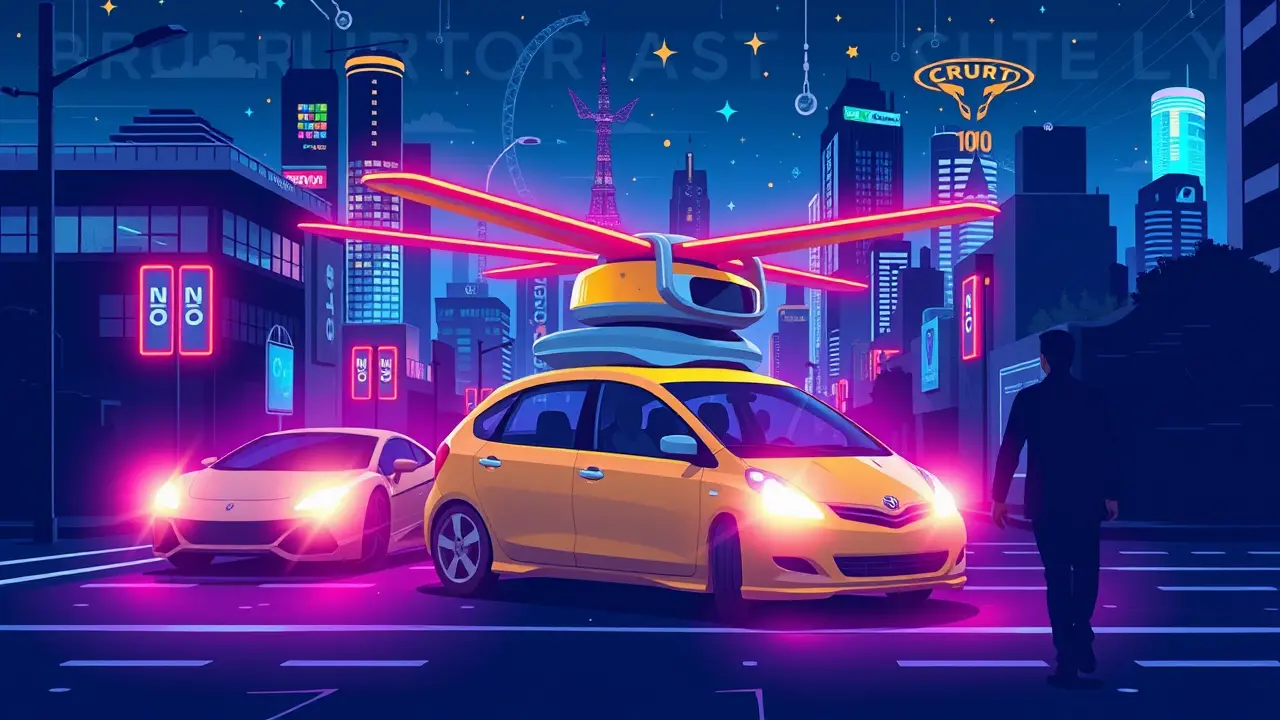
Otherauto & mobilityElectric Vehicles
TechCrunch Mobility: Insights from Disrupt 2025 Event
AN
Andrew Blake
18 hours ago7 min read
Alright, let's pull up a chair and dive into the bustling, chaotic, and utterly fascinating world of TechCrunch Mobility, fresh from the Disrupt 2025 event. It’s a lot to unpack, like one of those Wikipedia rabbit holes you fall into at 2 a.m. , where you start by looking up the torque of a new e-motor and end up reading about the socio-economic implications of urban air mobility grids in Southeast Asia.This year’s Disrupt wasn’t just another tech conference; it felt more like a grand central station for the future, a place where the blueprints for how we’ll move in the next decade were being argued over, demoed, and, in some cases, spectacularly failed on a live stage. The energy was palpable, a mix of unbridled Silicon Valley optimism and the gritty, determined pragmatism of engineers who’ve been burning the midnight oil to solve problems like battery density and sensor fusion.I found myself bouncing between conversations with startup founders who see autonomous vehicles not as cars, but as rolling data centers, and with city planners from Copenhagen and Singapore who are desperately trying to code these new technologies into ancient urban fabrics without causing total gridlock. It’s this tension—between the flashy, world-changing vision and the mundane, real-world implementation—that makes this space so compelling.Remember the hype cycle around flying cars a few years back? Well, at Disrupt 2025, the conversation has matured. It’s less about whether the vehicles can fly and more about the air traffic control algorithms, the noise ordinances, and the mind-boggling insurance liabilities.One panel, featuring a former FAA regulator and a CEO from a German eVTOL startup, devolved into a heated debate about whether our current concept of a 'street' is even relevant anymore. Are we looking at a future of three-dimensional transportation networks, and if so, who gets to build the digital infrastructure that manages it all? It’s not just tech giants and plucky startups in this fight; traditional automakers, the Fords and Toyotas of the world, are here with massive booths and equally massive R&D budgets, trying to pivot their century-old businesses into software-defined mobility platforms.I grabbed a coffee with an analyst who’s been tracking the sector since the first DARPA Grand Challenge, and he framed it as the third great transportation revolution, following the invention of the train and the automobile. The first redefined distance, the second redefined individuality, and this one, he argues, is redefining ownership itself.The data backs this up; subscription models for vehicles are growing at a staggering rate, particularly in dense European and Asian markets, challenging the very idea of the personal car as a status symbol. But for every sleek, autonomous pod concept, there's a counter-narrative emerging from the developing world, where the mobility problem isn't about luxury or convenience, but about basic access.A representative from a Kenyan logistics firm gave a stunning presentation on how they're using decentralized mesh networks and a fleet of electric motorcycles to deliver medical supplies in rural areas, a solution that is arguably more impactful and immediately scalable than any autonomous taxi service in San Francisco. This is the beautiful, messy reality of mobility in 2025: it’s not one story, but a thousand interconnected ones, a global puzzle where the pieces range from quantum-resistant cybersecurity for connected vehicles to the simple, human-centric design of a better bike lane.Walking the show floor, you see the entire spectrum, from a Japanese company demonstrating solid-state batteries that could finally make EVs accessible to the mass market, to a Dutch firm showcasing hyper-efficient cargo bikes that are quietly reclaiming city streets from trucks. The throughline, the central hub as TechCrunch rightly calls it, is data.The future of transportation is being written in lines of code and petabytes of sensor data, and the companies that can best interpret that data—to optimize routes, predict maintenance, and prevent accidents—will be the ones that define the next era. It’s a space worth watching closely, not just for the tech, but for what it tells us about our collective future: how we connect, how we work, and ultimately, how we live.
#TechCrunch Disrupt 2025
#transportation
#mobility
#future of transport
#startups
#innovation
#featured
Stay Informed. Act Smarter.
Get weekly highlights, major headlines, and expert insights — then put your knowledge to work in our live prediction markets.
© 2025 Outpoll Service LTD. All rights reserved.